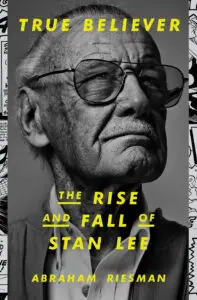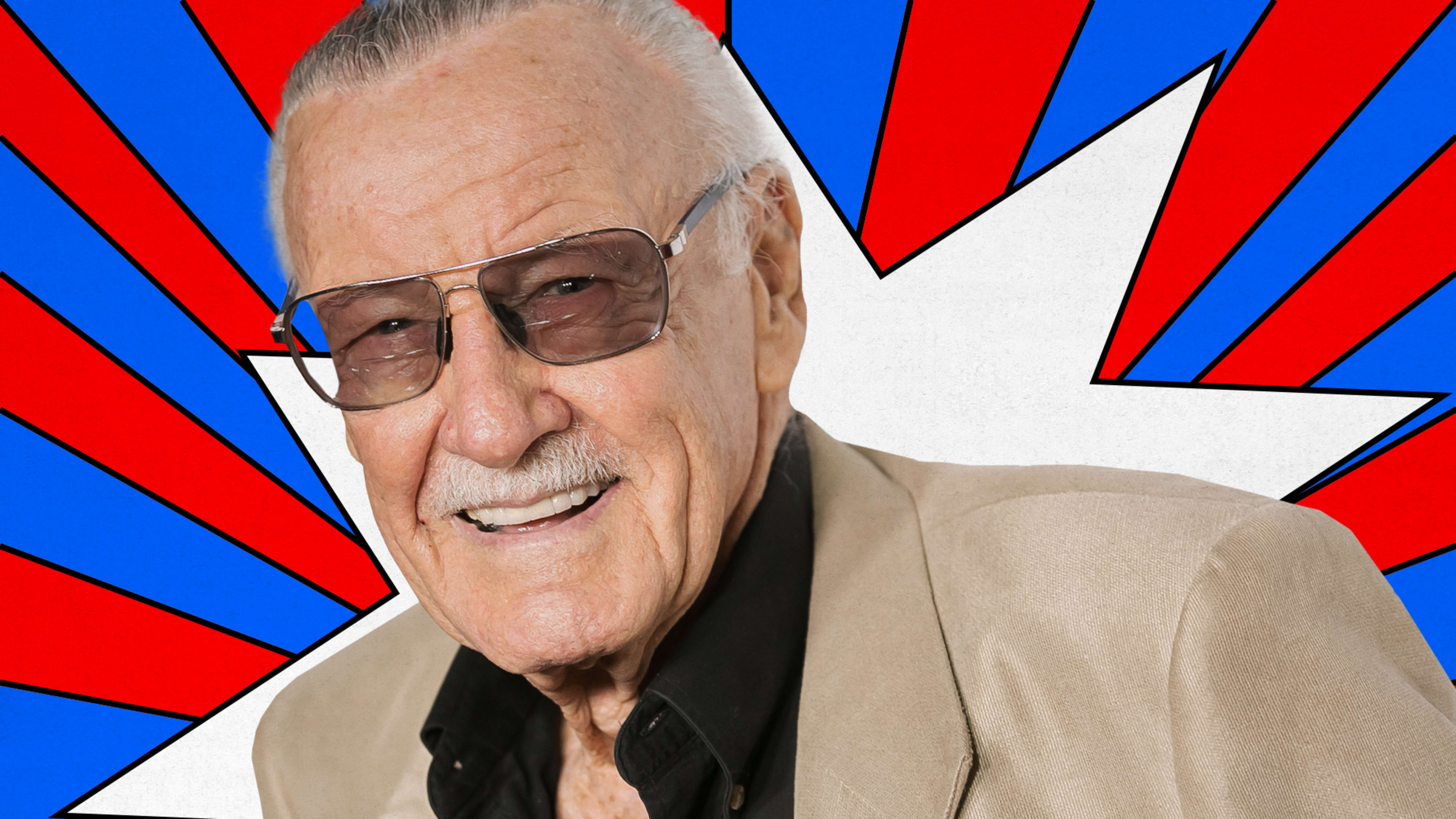A lot of Stan Lee fans are likely going to take issue with Abraham Riesman, author of the illuminating new biography, True Believer: The Rise and Fall of Stan Lee.
They’ll be in good company, considering that Lee reportedly took exception to Riesman’s previous writing about him, a 2016 longread in Vulture that poked holes in the mythos Lee nurtured about himself as creator of some of Marvel’s most beloved characters.
A collaborator from Lee’s regrettable early-aughts venture, POW! Entertainment, forwarded the piece on to Lee, who is said to have written back: “Hey, nothing to do but ignore them.” Additionally, Lee’s former manager, Keya Morgan, told Riesman that the article had disrupted a business deal they were working on with magician David Copperfield, and that Lee “did not appreciate the piece.”
Though it proved polarizing, the story was mostly met with “mournful positivity” from the comics world, according to Riesman, as it was the rare mainstream article that meticulously dealt with Lee’s creative credit controversy. The piece also struck a chord with an editor at Penguin Random House imprint Crown, who remembered it two years later when Lee passed away, at which point he approached Riesman about tackling a full-length biography.

After a nearly three-year journey that found Riesman interviewing almost everyone in Lee’s orbit, and combing through 200 boxes of Lee’s archives, True Believer has arrived. The blockbuster biography builds on the author’s earlier reporting in many ways that are not particularly flattering to Lee. Riesman explores in full the issues surrounding Lee’s notorious creative credit hogging, and itemizes Lee’s epic flop era, which stretches from the 1970s through the rest of his career, apart from his pivot to the Marvel Cinematic Universe’s mandatory cameo mascot. In fact, Lee’s long string of failures after his golden-era collaborators decamped from Marvel is perhaps the most damning evidence of his limited role in peak Marvel creations like the Fantastic Four.
However, while Riesman does make an unsparing, mostly-warts case against the image that Lee cultivated over the years, the author also unearths evidence that confirms Lee was indeed a visionary genius in many other regards.
Lee’s status as an influential innovator in snappy comic-book dialogue and rhythmic narration is beyond repute, as is his managerial acuity—the way he, to quote Jack Donaghy of 30 Rock, squeezed the sweetest juice from his employees’ mind grapes. Riesman thoroughly sketches out these qualities and the long shadow they cast over the comics industry. The author also depicts Lee’s prescience as he gets laughed out of Hollywood pitch meetings for trying to sell a project about Ant-Man (now a billion-dollar franchise) as well as a kids’ show concept that later became the Mighty Morphin Power Rangers.
Where Lee was most creatively clairvoyant, though, as True Believer confirms, was in conceiving of the Marvel comics world as an interconnected universe.
It’s difficult to overstate the magnitude of this innovation, which appears from Riesman’s reporting to be solely Stan Lee’s baby. The idea of letting all of Marvel’s characters cross over into each other’s stories, as part of one overarching uber-story, was a game-changing distinction from DC Comics at a time when both houses were still defining themselves, and it ultimately became the basis for the most successful movie mega-franchise of all time.
While researching the book, Riesman spoke with Mark Evanier, the longtime friend and current biographer of Jack Kirby, the deceased writer-artist dynamo who cocreated Captain America, the X-Men, and many more beloved characters. During their conversation, Riesman pressed Evanier on the interconnected universe question.
Not only did Kirby not claim to have created this conceptual leap, it turns out he wasn’t even all that fond of it.
“I expected when I asked [Evanier] about it, he would say, ‘Oh, Kirby says he was the one who came up with the interconnected universe and Stan always disputed it.’ You know, the kind of thing you tend to hear about Kirby and Stan,” Riesman says. “But Evanier was very blunt and he said that Jack didn’t like it. He thought it ruined his process in some ways and made it more difficult for him to construct the stories that he wanted to tell.”
So that eliminates Jack Kirby from the cast of characters who might have dreamed up the idea that paved the way for the Marvel Cinematic Universe.
Could it have been anyone else other than Stan Lee, though? According to Riesman, not likely.
“You don’t have anybody else claiming they came up with the idea,” the author says. “I don’t even know how you could have done it if you weren’t Stan, because Stan was the editor. He was the one overseeing all these titles. He was the one who could make sure they all linked up in one way or another.”
Although True Believer: The Rise and Fall of Stan Lee is bound to disillusion many Stan Lee fans as to the creative genius of their comic book hero, the biography ultimately makes clear that Lee was a man of remarkable talent and vision. His revolutionary contributions to the nascent comics world come through in the book as a major reason why Marvel has such an outsized role in the entertainment industry today.
“Selling the Marvel universe, selling the Marvel characters, selling Marvel as a company—that’s all Stan,” Riesman says. “That’s him doing a remarkable job of getting the word out and getting this brand to be cool and hip, and you don’t want to minimize that.”
Recognize your brand’s excellence by applying to this year’s Brands That Matter Awards before the early-rate deadline, May 3.
